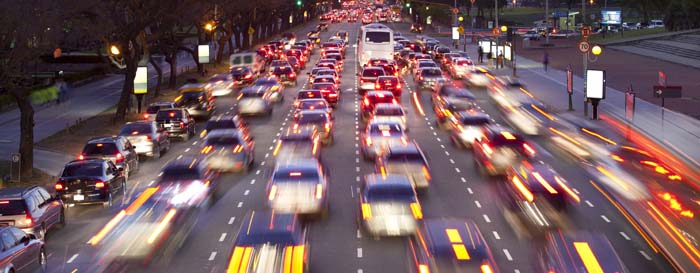Co-operative driving is the vision that traffic and transport can become safer, more efficient and more environmentally friendly if cars are allowed to communicate with each other and the roads they move in.
Then they can exchange, via mobile telecommunication, warnings and advisories about weather, road and traffic conditions. For instance, a car approaching a traffic jam can warn all following drivers in real time about the hazard, a construction site can signal its position to all cars in the vicinity, or drivers can see speed limits and other road signs in their dashboard display in addition to the ones by the roadside.

To make this happen, a common language needs to be developed and the European Commission-sponsored research project took a big step towards this goal when it recently presented its results at the Dutch DITCM test site in Helmond. The DRIVE C2X @ DITCM test site event unveiled the DRIVE C2X reference system, the technology that provides this common language. With the DRIVE C2X reference system it is now for the first time possible to create a harmonised testing environment across Europe. Such a harmonised environment is necessary to make test results comparable under the different circumstances that occur throughout Europe – an important step to give decision-makers in industry and public authorities much-needed certainty about the benefits of cooperative driving.
DRIVE C2X is a research project that brings together car manufacturers, research institutes, authorities and information technology providers to provide a pan-European reference for the communication among cars and between cars and the infrastructure (“C2X”). The project, started in 2011 with 31 full partners and 15 support partners co-ordinated by Daimler AG, has an overall budget of 18.8 million euro, with 12.4 million euro requested contributions from the European Commission.
At Helmond, the partners gave visitors from all over Europe and overseas a first demonstration of the technology on public roads. In a 20-minute demonstration tour they experienced how cars send each other information on potential traffic hazards such as an approaching emergency vehicle or obstacles on the road. Also on display was also the new interface which shows three levels of alerts, depending on the urgency of the situation. In total, nine functions were shown: the safety functions Weather Warning, In-Vehicle Signage, Road Works Warning, Obstacle Warning (between cars and from the infrastructure), Approaching Emergency Vehicle, Motorcycle Approaching Indication, and the efficiency function Green Light Optimised Speed Advisory which allows drivers to find the right speed to pass the next traffic light during a green phase – resulting in a quicker, smoother, safer, and environmentally friendlier traffic flow. In addition to the demonstration ride visitors were also treated to a view of the data collection process at the test management centre of the DITCM test site.
Hermann Meyer, ERTICO CEO, said: “The DRIVE C2X event at DITCM in Helmond is solid proof of what co-operation between multiple stakeholders can achieve. The creation of a C2X reference system validated through interoperability testing creates the means for deployment of co-operative systems in Europe.”
The DRIVE C2X reference system, shown at this event, will serve as reference software for the six European test sites to deploy interoperable co-operative mobility infrastructure. In parallel DRIVE C2X is conducting a dissemination and promotion campaign to create public awareness for the benefits of this technology and to contribute to the scientific exchange in this thriving research area.
For more information visit www.drive-c2x.eu/project.